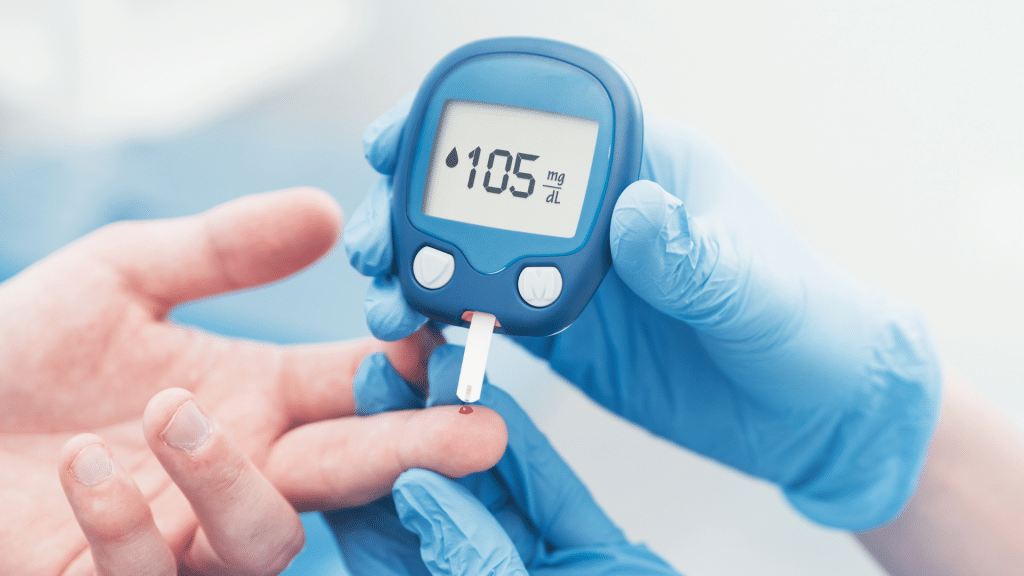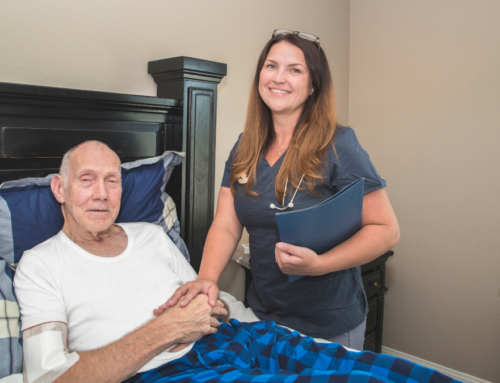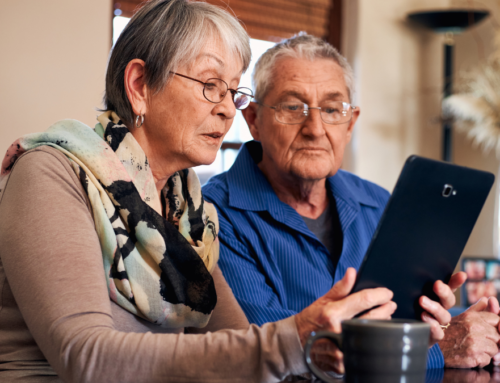
A Family Caregiver Guide…
to care for an aging family member with diabetes.
Diabetes can be a debilitating disease for anyone, but it is especially hard on older adults. Diabetes increases the risk of many other health problems common in older adults such as heart disease and stroke that will lead to serious complications. The National Institute of Aging reports that 40% of people aged 65 or above who have diabetes are also dealing with two or more chronic health conditions. It is a metabolic disorder where the body doesn’t process glucose properly. This can be due to a lack of, or insufficient amount of, the hormone insulin. Diabetes can be brought about by numerous factors such as age and obesity, but it is most commonly caused when the pancreas does not produce enough insulin, or produces no insulin at all.
Fortunately, there are ways to treat the symptoms of this condition and prevent it from becoming worse. This includes learning how to monitor blood sugar levels at home with a glucometer as well as understanding the importance of diet and exercise for those living with diabetes. If you have an elderly family member who has been diagnosed with this chronic illness, here’s what you need to know about managing their care alongside their doctor:
1. Understand the risks
Diabetes is a silent killer.
The elderly who are diabetic may not be aware of it, but by the time they show symptoms their chances for survival have diminished significantly because most with this condition don’t live past 65.
People think diabetes means you can never diet or exercise again; however there’s an exception when your life depends on keeping yourself alive. For example, in kidney failure, where calorie restriction helps prevent further complications from arising out of nowhere, along with maintaining glucose levels within normal ranges so that organ function doesn’t suffer too much damage.
Diabetics are also prone to health issues like neuropathy, vision impairment, glaucoma, and cataracts that can lead to blindness.
All these diabetes-related complications are silent killers that one might not notice until it’s too late because it has already done its damage.
2. Recognize symptoms of diabetes-related conditions
Knowing diabetes-related symptoms is the best way to know diabetes-related conditions are developing.
Symptoms of diabetes-related conditions include (but are not limited to):
- Anxiety, depression or irritability (from high blood sugar) that doesn’t let up despite treatment for diabetes;
- frequent urination (not related to menopause);
- more thirst and hunger than usual (related to diabetes);
- dry itchy skin (not related to menopause);
- blurry vision that doesn’t go away even if you take your diabetes medication;
- frequent or recurring vaginal yeast infections (not related to menopause);
- tingling, numbness or pain in the feet or hand that doesn’t go away.
Knowing diabetes-related symptoms will help family caregivers know if diabetes-related conditions are developing so they can take action and keep diabetes under control so it doesn’t lead to more serious conditions. If you notice any of these symptoms in yourself or an elderly loved one who is diabetic, go to the doctor immediately.
3. Know how to provide care for a person with diabetes
One of the most important things that you can do for someone with diabetes is care. A person’s life may depend on their ability to manage it themselves or be cared for by family members. There may come a point, however, where others who are qualified in handling this type of situation will need to be brought in, to manage their condition beyond just providing insulin injections and giving advice about diet changes like eating healthy foods low glycemic index (GI) meals – which helps reduce spikes in carb cravings.
Check if diabetes-related conditions are developing by monitoring symptoms and sugar levels. Have them check their blood sugar before, during, and after meals to know what is causing their glucose levels to spike up or down so you can help them with meal planning.
4. Help your loved one make healthy choices
To make healthy choices, your loved one needs you!
A diabetes diagnosis can be daunting. As a patient or family member with this condition, it is important that they have the support of their friends and families around them as well – not just medical professionals who are accustomed to managing these types of diseases.
They need you to be patient, supportive, and understanding that diabetes is a life-long disease. There will be more hurdles to jump through but with planning and enough support, diabetes can also become manageable.
- Eating diabetes-friendly foods
Diet plays an important role in diabetes-related conditions, so diabetes patients should be careful with what they’re eating. Healthy diabetes meals include vegetables, fruits, and whole grains like brown rice pasta or quinoa (high-fiber, low GI carbs).
Avoid refined carbohydrates that are high in sugar or fat like white rice, refined flour products (cakes, cookies), noodles, or added sugars (soft drinks) to diabetes meal plans. They should eat three diabetes-friendly meals a day but not more than three servings of snacks like low GI fruits, raw unsalted vegetables, and nuts every two hours.
Since people with diabetes need to avoid sugary foods like cakes, pies, and candy (including diabetes-friendly candies), they should drink water, fruit juice, or milk instead of soda or other diabetes-unfriendly drinks.
- Physical activity for diabetes
People with diabetes should do at least 30 minutes of exercise every day, provided they are physically able, and they have approval from their doctor. Diabetes-friendly exercises include walking, aerobics, and low-impact bodyweight exercises like squats and lunges.
If diabetes patients need to lose weight, they should aim for at least 30 minutes of moderate-intensity exercise like jogging, 20 minutes of vigorous exercise like running, or 10 minutes of high-intensity interval training (HIIT).
5. Managing diabetes at home with senior living assistance
Diabetes is a lifelong disorder that requires careful monitoring and diabetes medication as well as healthy diabetes meals. It can be tough to keep diabetes under control if someone has diabetes-related complications like lowered eyesight, neuropathy diabetes nerve damage, or poor circulation in the legs or feet.
So you might need help from senior living assistance at home. What you need is a diabetes-trained caregiver and supplies like glucose testing equipment, or diabetes medication to manage the condition. Diabetes generally has no cure, but it can be managed by taking insulin shots.
6. What to ask when choosing senior living assistance at home for diabetes care
Here are some questions to ask yourself or your family before choosing a senior living expert :
– Does the senior living expert have diabetes training?
– How experienced are they with diabetes?
– What’s their approach to diabetes medication management?
– Are they certified as a diabetes senior living expert?
– How much do they charge for diabetes senior living assistance, at home diabetes patient care services, or senior care services with the elderly?
With the prevalence of diabetes steadily increasing, it’s important to take preventive measures now before your elderly loved one develops a chronic condition. The good news is that there are steps you can take now to help prevent or manage diabetes in your family member. If these strategies seem daunting for you as well, we offer free consultations where our experts will walk through your options with the goal of giving peace of mind about their health going forward!
Have questions? Let us know what information would be most helpful and we’ll do all we can to answer them. Give us a call today at (678) 494-8129 or email us at info@SilverCompanions.com. We want to help make sure your family member gets all the attention they deserve during a time when they may not feel capable of taking care of themselves without some extra support.





